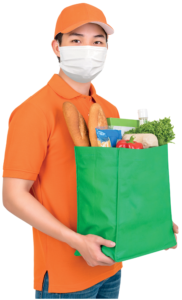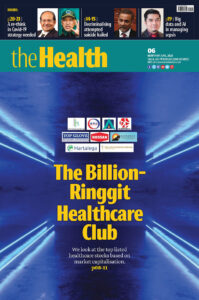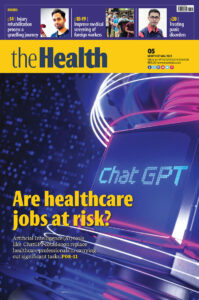PERSONAL hygiene among food handlers is critical for food safety, especially during the Covid-19 pandemic, and should include proper handwashing procedures, strict SOPs, frequent cleaning and sanitisation, food respiratory hygiene, and frequent use of alcohol-based sanitisers.

“This is crucial nevertheless in any food industries small or big scale business,” stressed Federation of Malaysian Consumers Associations (FOMCA) President Datuk Dr Marimuthu Nadason.
“The Malaysian government has imposed strict rules only allowing workers who have completed full doses of vaccination to resume work in the food preparation area.
“Food & Beverage (F&B) owners should instruct employees with Covid-19 symptoms to inform their supervisors.
“Emphasise effective hand hygiene, including washing hands for at least 20 seconds, especially after going to the bathroom, before eating, and after blowing your nose, coughing, or sneezing.”
He said proper training should be provided for food handlers, and employees with new or altered duties should apply the training according to established procedures such as:
a. Food handlers shall wash, rinse, and sanitise food contact surfaces, dishware, utensils, food preparation surfaces, and beverage equipment after use
b. Food handlers shall consider the best practices, such as cooked foods reaching the proper internal temperatures before serving or cooling and hot foods are cooled rapidly for later use.
c. Check temperatures of foods being cooled in refrigerators or rapid cooling techniques such as ice baths and cooling wands. The time foods being stored, displayed, or delivered are held in the danger zone (between 4°C and 57°C) is minimised.
Guidelines for food delivery services
Food safety issues may arise as more food deliveries become available during the pandemic, stressed Marimuthu.
“It can be mitigated by following established food safety practices for time and temperature control, preventing cross-contamination, cleaning hands, avoiding sick workers, and food storage.
“The four main things to remember for good hygiene in your food business are the 4Cs: cleaning, cooking, chilling and cross-contamination avoidance.”
- Keep hot foods hot and cold foods cold by storing them in appropriate transport vessels. This means:
– Keep cold foods cold by keeping enough coolant materials, e.g., gel packs.
– Keep hot foods hot by ensuring insulated cases are correctly functioning.
- Ensure food that is received is separated to avoid cross-contamination, e.g., keeping raw foods separate from cooked and ready-to-eat foods.
- Ensure that any wrapping and packaging used for food transport prevents food contamination.
“Food services delivery vehicles or containers used for transporting anything other than food need effective cleaning between loads to avoid the risk of contamination. Delivery service providers should routinely clean and sanitise coolers and insulated bags used to deliver foods,” he explained.
He said consumers needed to be aware of delivery times. “Cooked meals can make you sick if they sit out for more than two hours, or as little as one hour if it’s 32°C or warmer outside.
“Delivered restaurant meals should be eaten immediately or refrigerated if they contain a cooked or cold product, such as a salad of fresh cut fruit or a grain and vegetable bowl with grilled chicken.”
Ensuring food safety
Proper SOPs should be in place to ensure food safety and prevent the spread of Covid-19 in the food industry.
 “These address key considerations for how foods offered at retail can be safely handled and delivered to the public and key best practices for employee health, cleaning and sanitising, and personal protective equipment (PPE).”
“These address key considerations for how foods offered at retail can be safely handled and delivered to the public and key best practices for employee health, cleaning and sanitising, and personal protective equipment (PPE).”
The standard practices in personal hygiene and kitchen sanitation must be followed strictly to prevent the spread of Covid-19 through food processing activities such as manufacturing, packaging, transporting, and regular restaurant operations.
Food delivery services must establish designated pick-up zones for customers to maintain social distancing. It will ensure social distancing when delivering food, for example, by providing ‘no contact’ deliveries and sending text alerts or calling when deliveries arrive. — The Health








